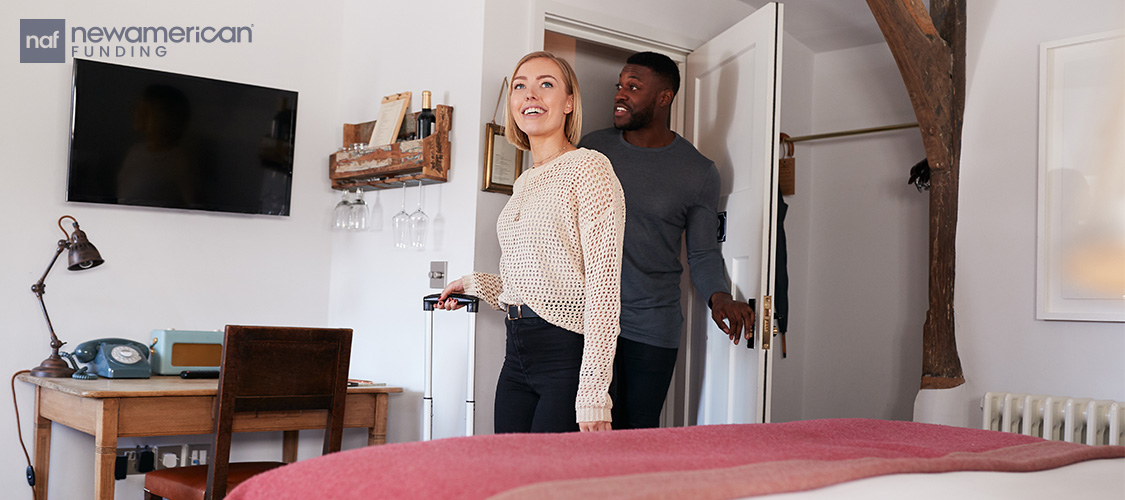Homebuyers
Millennials Are Warming Up to Homebuying—Here’s How They Can Close the Deal
June 30, 2025
Millennials have long been referred to as the “wait and see” generation when it comes to homeownership. But that may be changing.
Last fall, just 15% of millennials said they were interested in buying a home. Now? That number has climbed to 23%, according to a May Realtor.com survey. (Millennials are generally those between the ages of 29 through 44 in 2025.)
It’s a modest jump but one that suggests growing confidence among a generation that has long been priced out of the real estate market.
“I work with a lot of millennials who feel like homeownership is completely out of reach,” said Adriana Trigg, owner and founder of Legionary REI in Tampa, Fla. “But there are some great tools out there to help make it happen.
For millennials exploring homeownership, buying may within their financial reach. Here’s what millennials need to know.
Start with financial clarity
For many millennials, the first step toward buying a home is understanding what they can afford.
That means starting with a mortgage pre-approval, but also doing a thorough accounting of what monthly homeownership will entail. Property taxes, maintenance, utilities, insurance, and potential homeowners association fees should all be factored into a monthly budget alongside your mortgage.
“Buyers who have steady savings and manageable debt may be closer to unlocking the front door than they think,” said Trigg.
Be practical about mortgage rates
Mortgage interest rates remain a central concern to many would-be buyers. However, a realistic mindset can be more valuable than waiting for the perfect moment to make a purchase.
Rates may fluctuate, but millennial buyers should focus on what they can afford right now and whether that monthly payment supports long-term stability.
“Don’t overthink the rate environment,” said Sarah Thomsen, a millennial real estate broker with Thomsen Real Estate in Denver and Summit County, Colo. “If the home fits your financial plan today, that’s what matters. You can always refinance later if rates drop.”
Make small credit moves for a big impact

One of the most overlooked tools that millennial buyers can use to their advantage before entering the market is improving their credit score. A few targeted moves, such as paying down revolving balances, avoiding new lines of credit, or correcting reporting errors, can have a significant impact on loan terms.
“Small improvements can make a big difference,” said Trigg. “One of my clients boosted her score by just paying off a small credit card and keeping her balances low. She ended up locking in a much better interest rate.”
For first-time buyers seeking to save money, a lower rate may mean they can afford more expensive properties.
Embrace the evolving definition of home
The idea of a starter home has changed.
Ownership today may begin with a condo or a two-bedroom townhome or single-family home in need of updates. These types of smaller homes and fixer-uppers can be your first steps on the property ladder.
“Millennials don’t need to wait for the market to change—we need to get creative,” said Thomsen. “The deals are there if you’re looking for value, not perfection.”
Tap into down payment assistance

If you think you need 20% down, “that’s not necessarily true,” said Trigg.
U.S. Department of Agriculture (USDA) loans and U.S. Department of Veterans Affairs (VA) loans don’t require any money down, but each has its own specific requirements—either for the property or the borrower.
Buyers can also choose a Federal Housing Administration (FHA) loan, which may allow them to put just 3.5% of the sale price down.
There are also many local and state programs that help with down payments and closing costs. These are especially useful for buyers with solid income but limited cash on hand.
Many offer grants or forgivable loans that can reduce the upfront costs of buying.
“Don’t sleep on down payment assistance programs,” advised Trigg. “I’ve seen it be the thing that tips the scale for a lot of buyers.”
Creative paths to homeownership
If a traditional home purchase feels out of reach, creative ownership strategies may offer a back door.
“I work with many buyers in my generation who are navigating rising rates, high home prices, and limited [housing] inventory—but still finding creative ways to make it work,” said Thomsen.
She shared several strategies she’s both recommended to clients and used herself:
1. Home hacking

There are many ways that new homeowners can make money off of their properties.
Thomsen rents out her basement as an Airbnb. The proceeds cover her monthly mortgage payment—and then some.
“Even if Airbnb isn’t your thing, having a roommate is a powerful financial tool,” she said.
For millennials especially, having a home with a rental should be reframed as a strategy, not a fallback plan.
“It’s a smart move more millennials should see as part of a long-term wealth strategy,” added Thomsen.
2. Co-buying with friends
Thomsen also co-purchased a mountain home with friends.
“We use it as a vacation home and short-term rental,” she said. “We split the down payment and share usage, maintenance, and income.”
In a pricey market, this type of home co-buying can provide millennials with access to a property (and rental income) that would have been unaffordable otherwise.
3. Buying from motivated sellers
On both of Thomsen’s home purchases, she negotiated seller-paid incentives.
“In each case, they offered to cover mortgage rate buydowns and closing costs, which saved me thousands and lowered my monthly payment,” she added.
Buydowns are when the seller buys down the mortgage rate of the home purchaser, usually for the first one to three years of purchaser’s mortgage.
Her best advice to millennials is to focus less on the cosmetic perfection of a home and more on the financial footing it provides.
“You might not get your dream kitchen on day one but if the numbers work, you can build equity and upgrade later,” said Thomsen.






 Smart Moves Start Here.
Smart Moves Start Here.